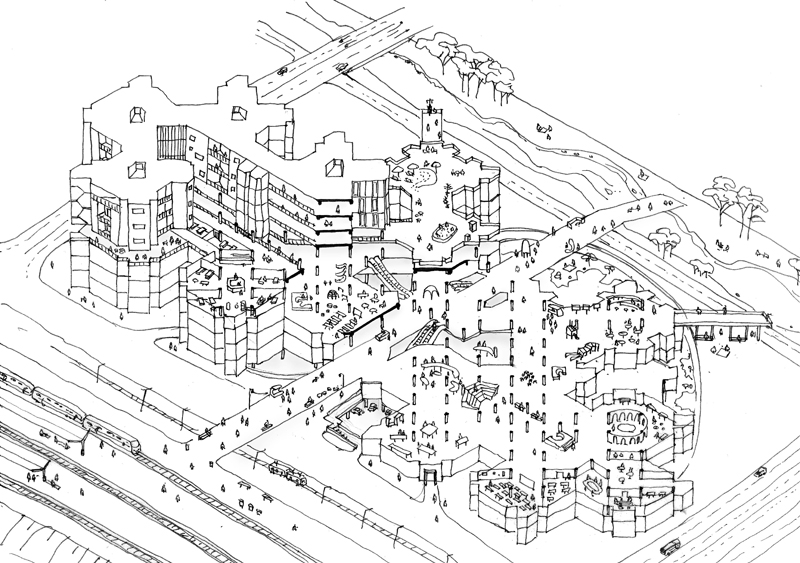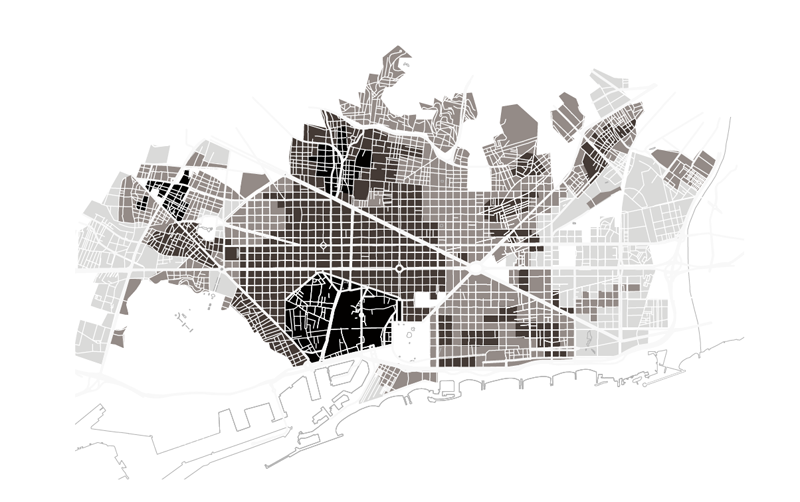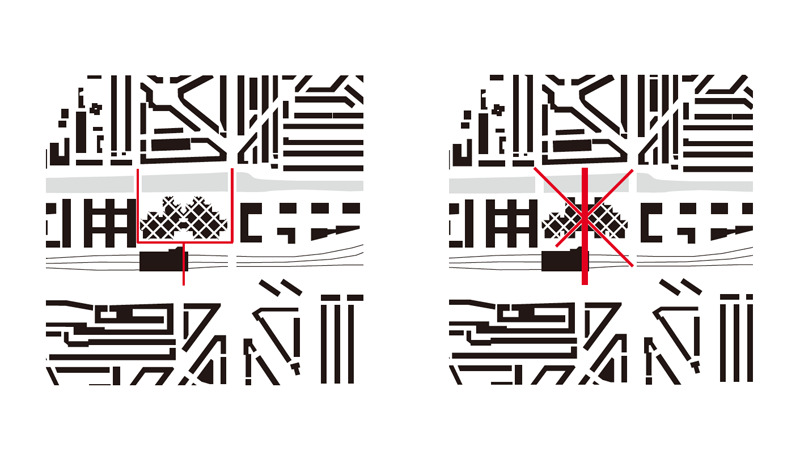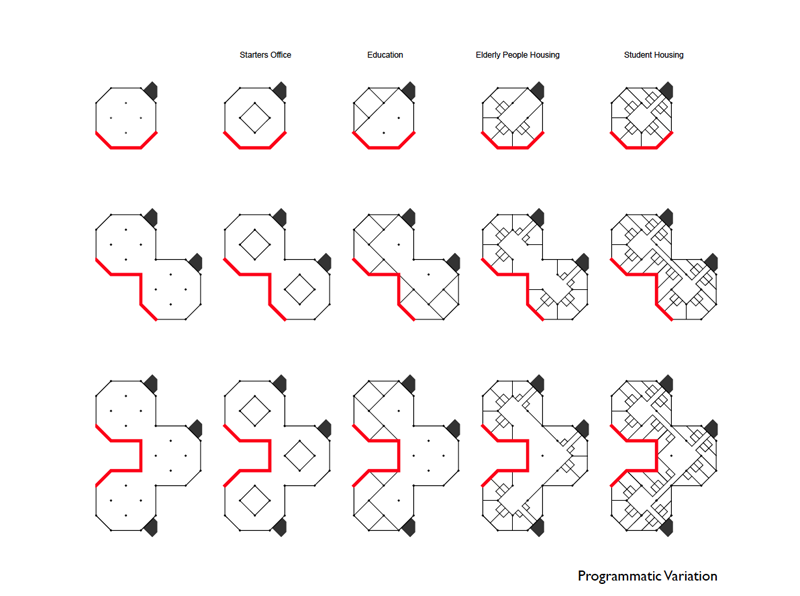
Open Structure- Super Grid
Open Structures open to interaction with the outside world; they can influence their surroundings and also be influenced by their surroundings. In architectural terms this mainly relates especially to consequences in time and therefore to expansion or transformation.
Cities always begin from somewhere and generally grow from a nucleus under the influence of centrifugal forces, from which heading to forms that shape themselves. There is no notion of a controlled, designed periphery of the city, cities are usually not pre-designed, they design themselves from the inside outwards, ultimately lead by hardly controllable forces within society.
In contrast to cities, buildings are conceived from the outside in. In addition the architect generally has to conform to urban stipulations. On top of that the building should fit into its surroundings, which poses its demands on the shape of the building mass. This perhaps better explains that the limitation to view buildings as an independent, completed and closed constructions standing in the city, it is definitely not a final state which does not easily let itself be changed or expanded. Indeed, it is a connection open to the city, to the society, to the people and all of the livings surround. Articulation and repetition take over the effect of an organic whole and make sure that that what we see we always experience as an entirety.
This research is mainly about the reformation strategy of the Dutch Ministry building of Social Affair designed by Herman Hertzberger in 1970s. We start from the case study of the city fabric of Barcelona, for its grid system and the exceptions. Aiming to illustrate the developing processes of the entire city and the certain hierarchy within the grid city, in order to explore the possibility of opening the status of the Ministry building of Herman Hertzberger.
We strategically propose to enlarge the existing diagonal grid of the building, not only inside but also extend to the exterior environment and urban fabric. The implicit super grid takes the role of articulating the park, railway station and the surrounding blocks. A programmatic variation is also suggested to illustrate the additional program such as offices, educational facilities and housing units.
nb: Masterclass with Herman Hertzberger
开放结构——超级网格
开放结构体系是指建筑对于外部环境的互动性开放,它既可以影响周围环境也可以被周围环境所影响。在建筑范畴,开放结构体系主要是指建筑与时间变化而产生的扩展和转变有关。
城市通常都是从某个地方开始形成,由于一些离心的力量慢慢地从其核心点向外扩散,随即逐渐形成其固有形态。城市没有被控制和设计而成的边界概念,城市通常都不是被预先整体设计好的,城市是由不可控制的社会力量(经济、政治、文化等)从内向外自行设计出来。
与城市相反,建筑是在符合城市规划原则的基础上被由外至内的方式构思出来。建筑要与其周围的环境和条件相适应,这也构成了对建筑形态的某种要求。这似乎更好解释了把城市中的建筑作为一个独立、完成、封闭的个体是一种非常狭隘的看法,城市中的建筑绝不是一个不会被改变和拓展的终极所在。事实上,建筑可以被看成是一个与城市、社会、人群和所有周遭生活的一种对接。连通和复制,往往使建筑在城市中起到了有机相连的作用,并且能够确保我们看到的和感知的城市永远是一个整体性的存在。
这个关于开放结构体系的研究将荷兰建筑师赫尔曼·赫兹伯格二十世纪七十年代的作品——荷兰社会事务部办公楼的探索性改造作为触媒,来探讨开放结构体系的含义和在城市中的体现。我们从巴塞罗那的城市肌理案例研究入手,研究了网格城市的发展过程以及其图底和规划特例的关联。试图在图解整个城市的发展肌理中,暗含在均匀网格中的层级关系,并希望以此研究结果来作为对赫兹伯格社会事务部办公楼中重建开放体系的可能性。
我们提议了一个扩展原建筑中斜线轴网的策略。将原斜线轴网的层级区分开,将新的主要轴线在建筑空间中提取出来作为新的公共交通,并将其延伸到建筑外部的城市空间肌理中去,放大的斜线网格打通了城市公园、火车站和该建筑周边的居住街区。对于新加入的建筑功能部分,比如办公室、教育设施和居住单元,我们通过一种灵活的系统化方式提出了拼接和变形的可能,作为依附在新的主要交通轴线上的功能组成。

grid and extension of Barcelona

grid and exception

grid extension

